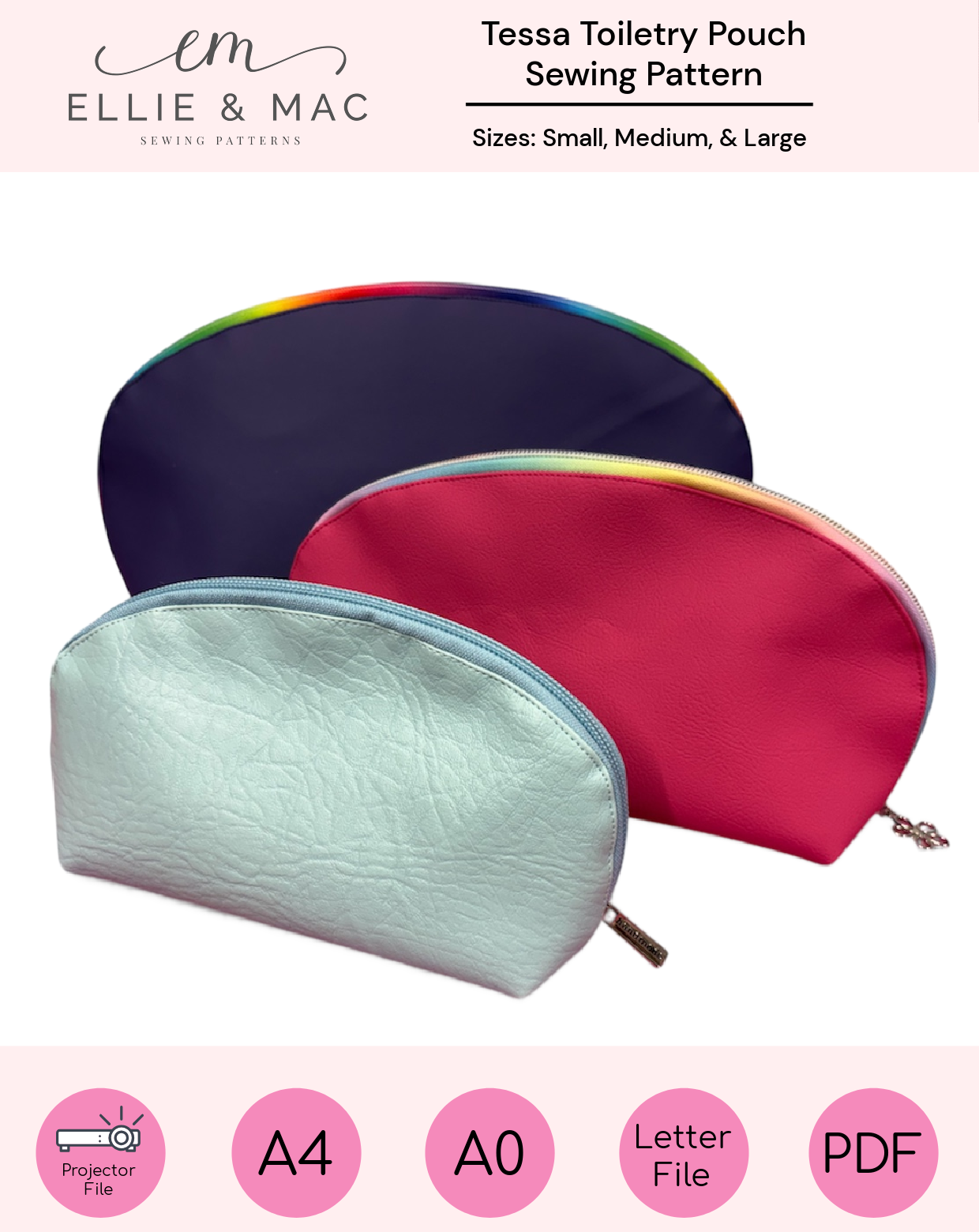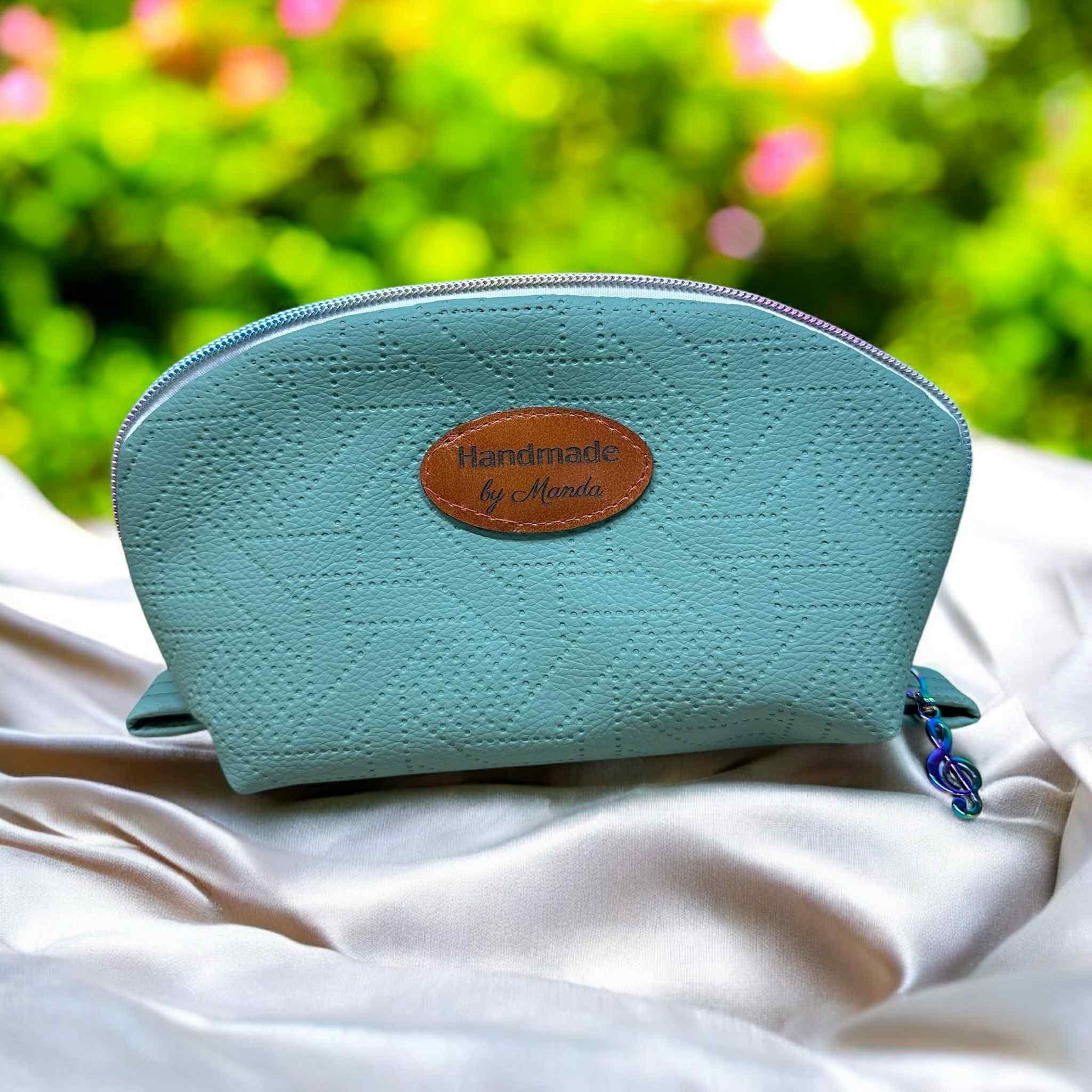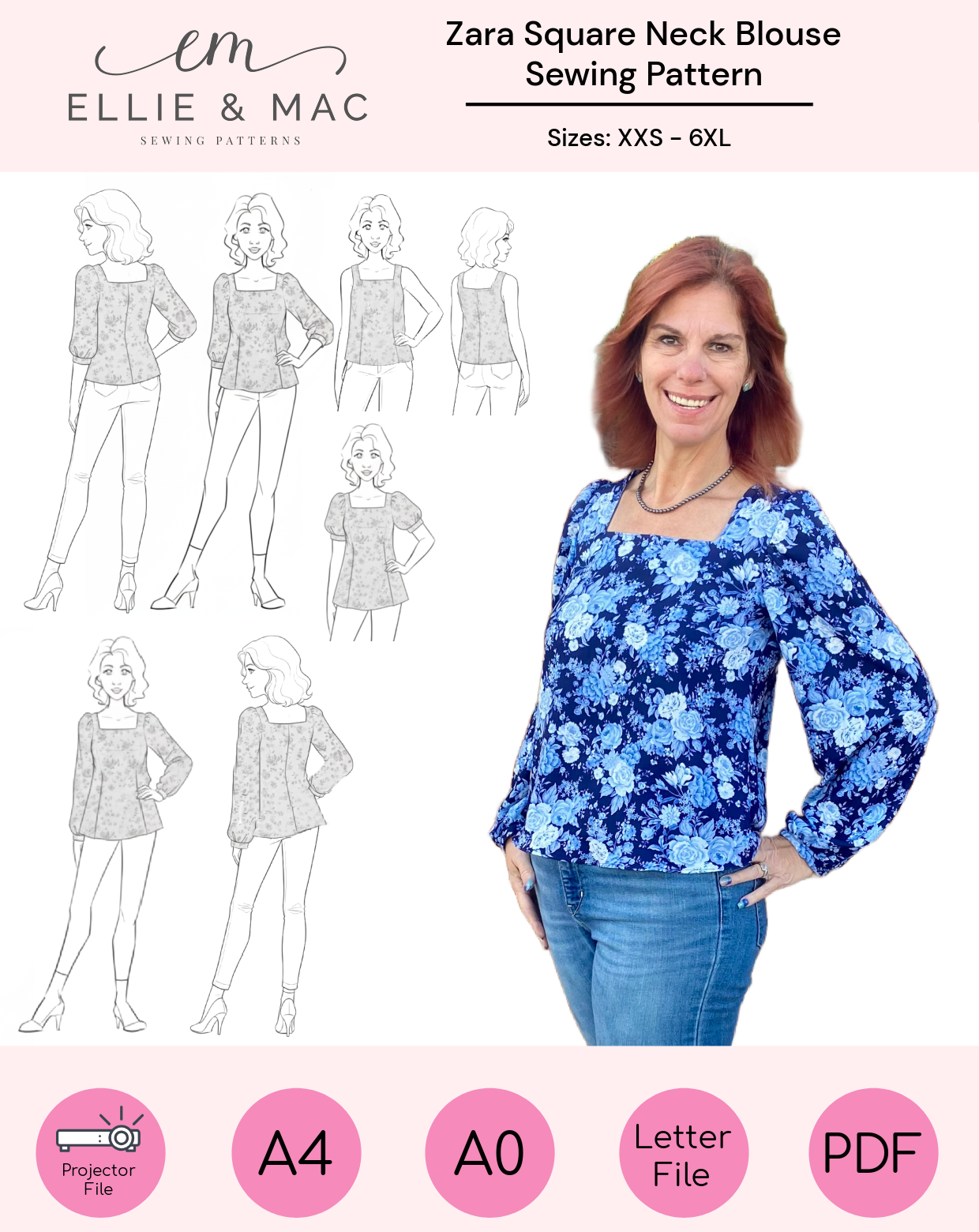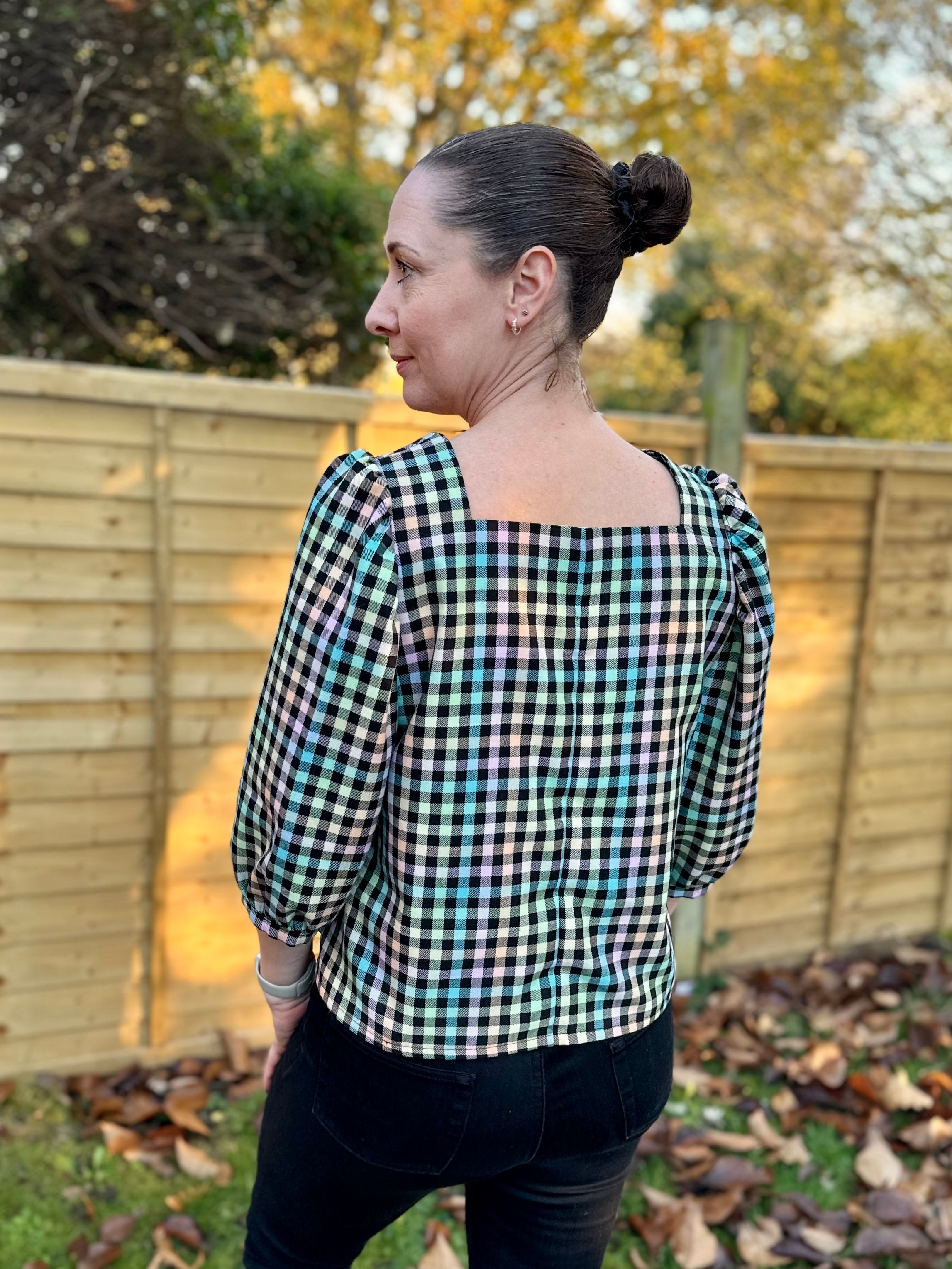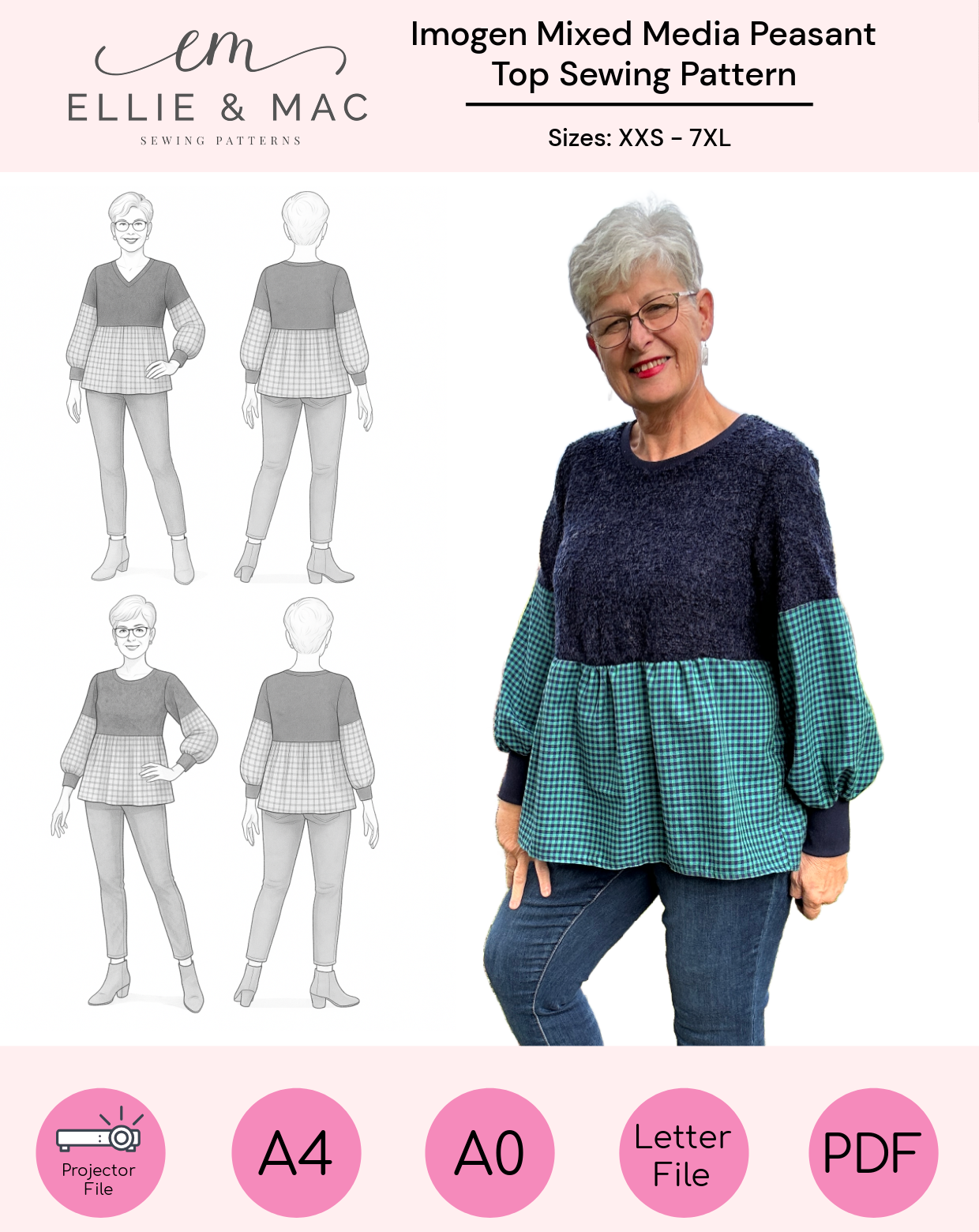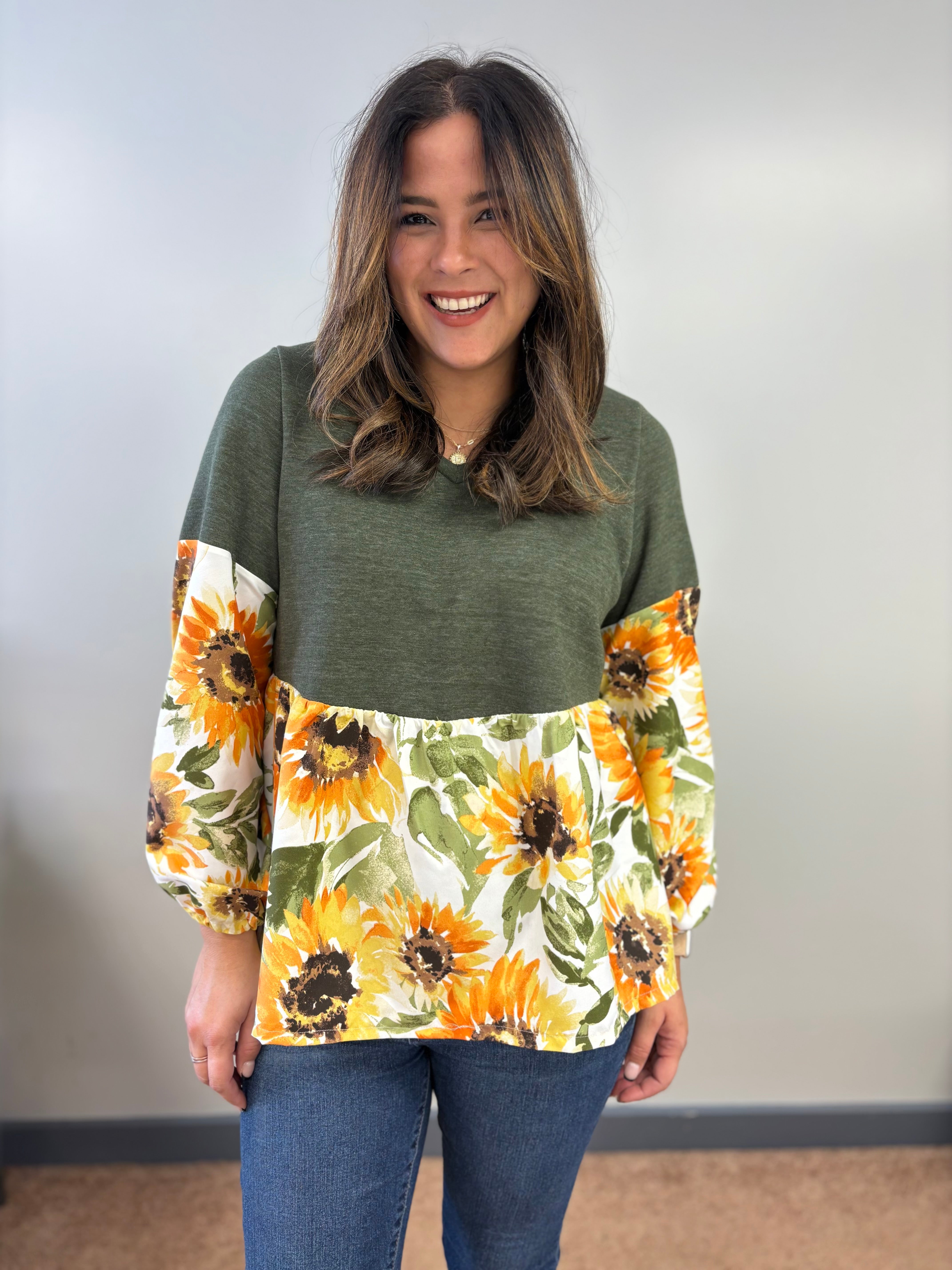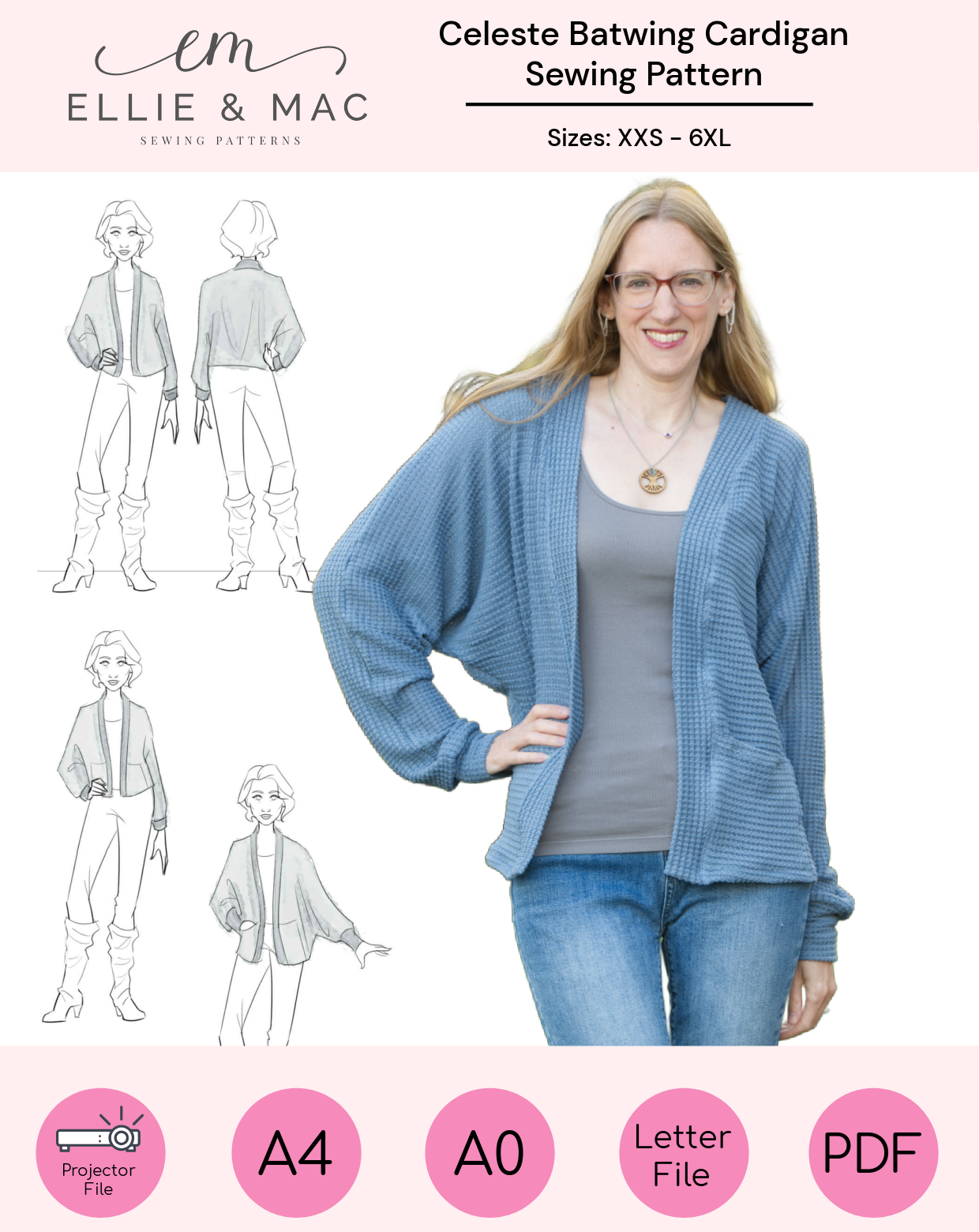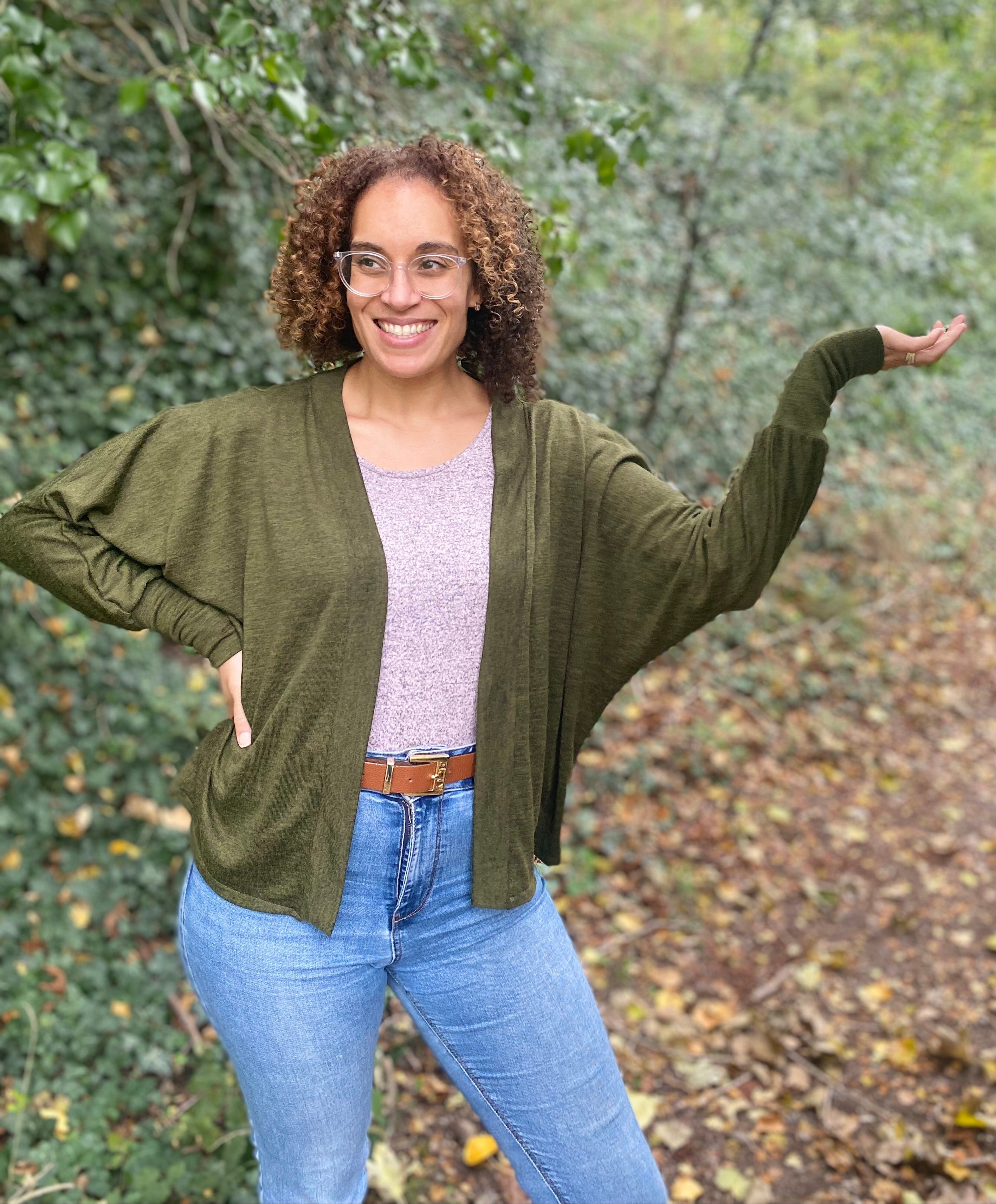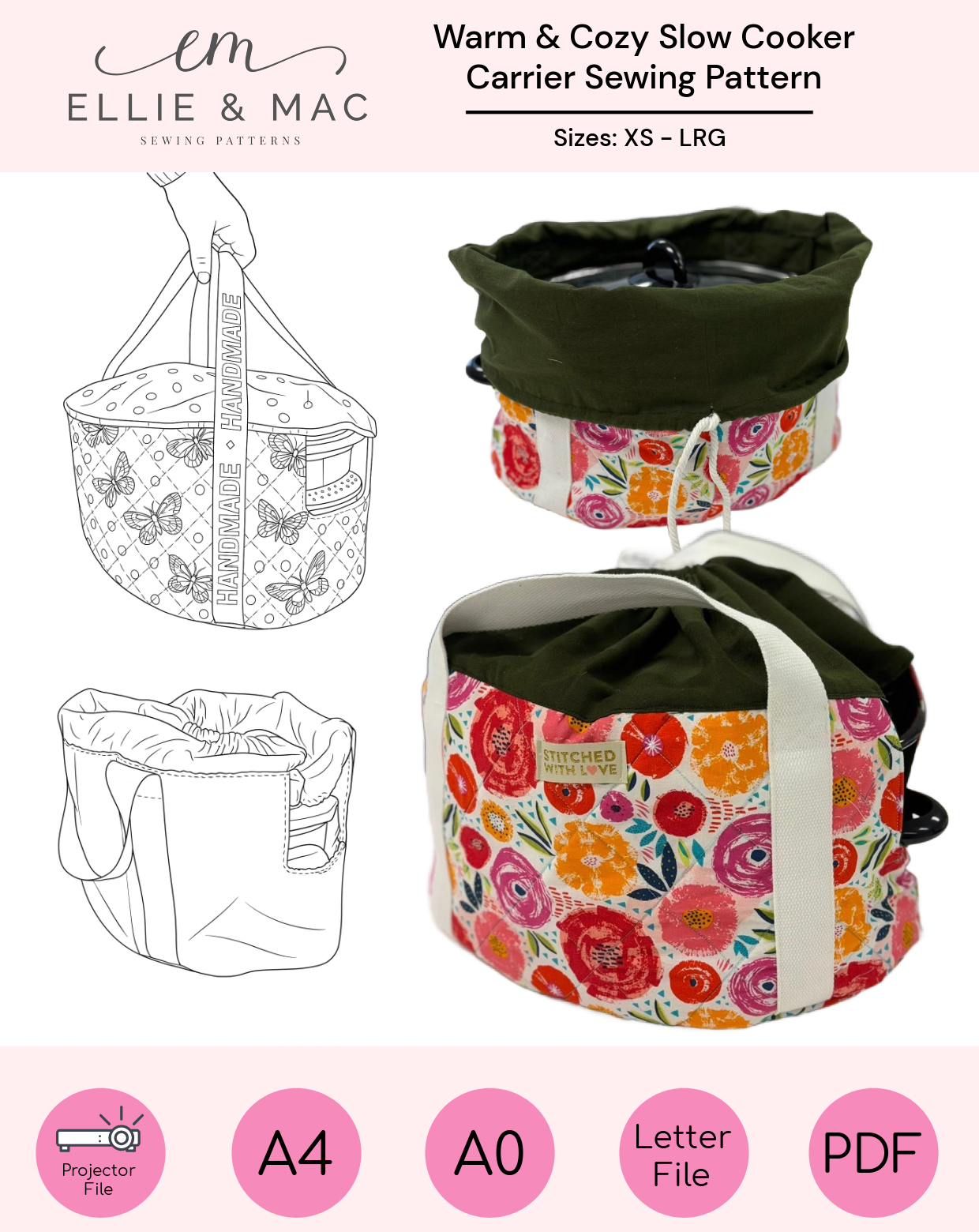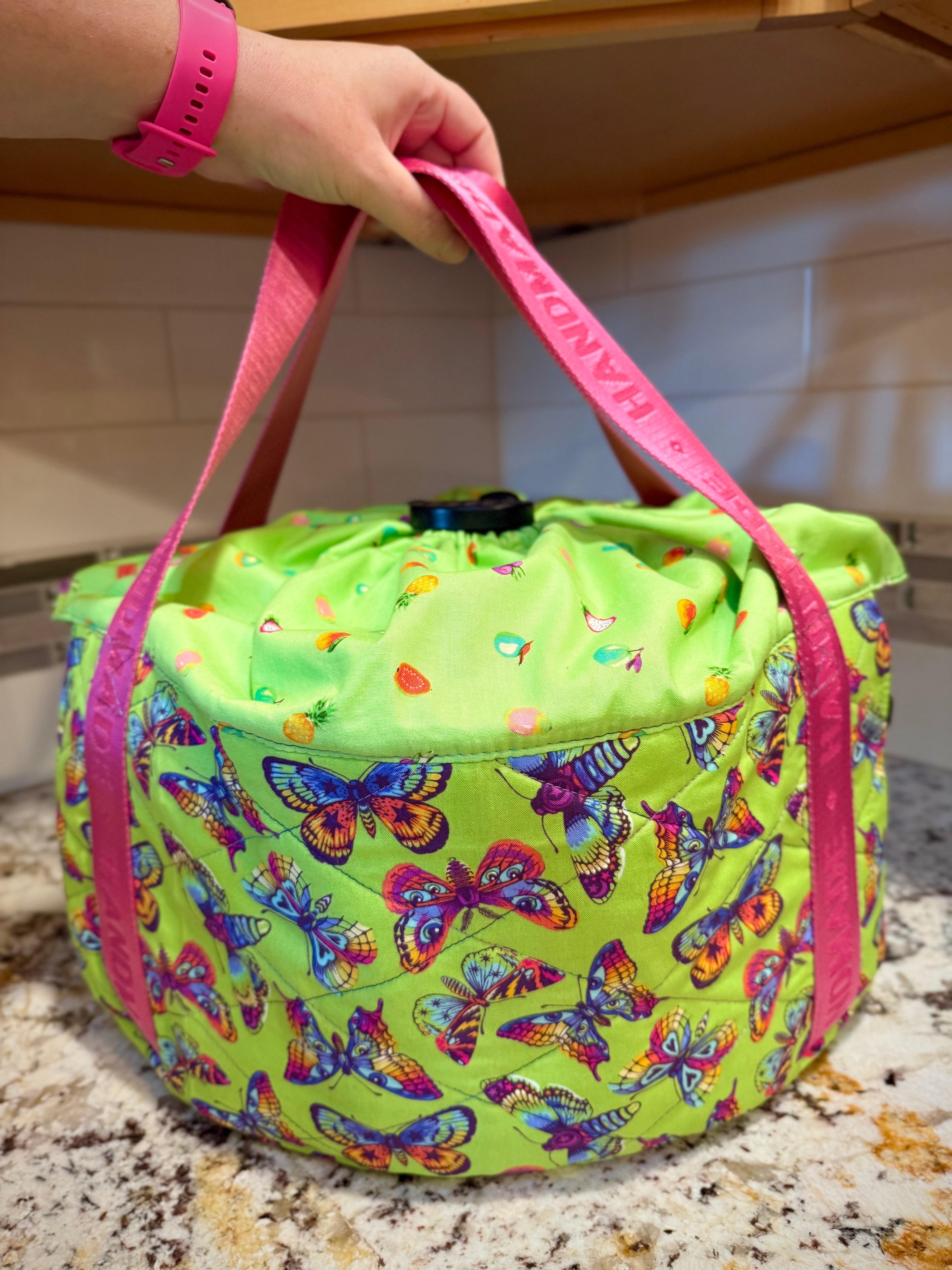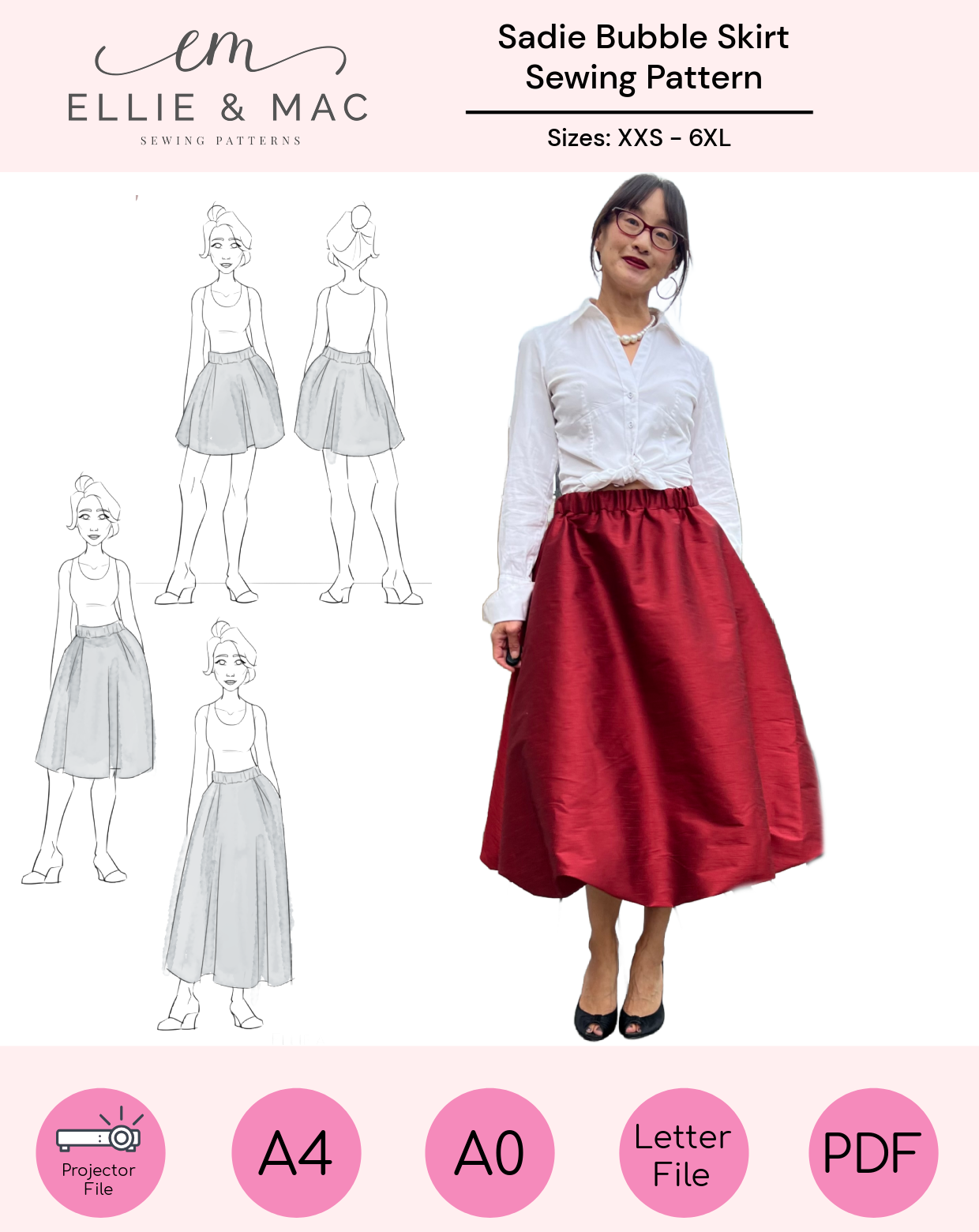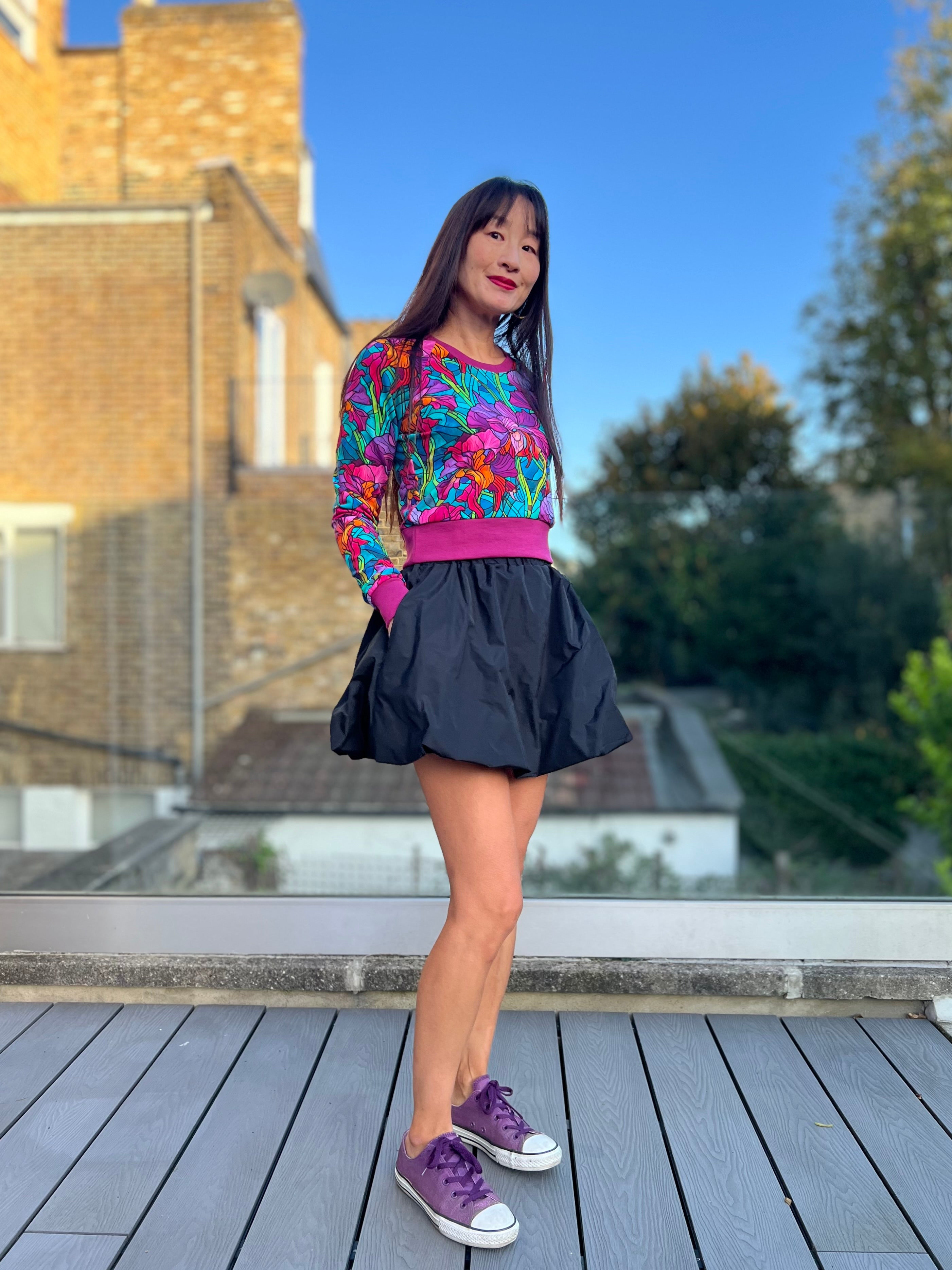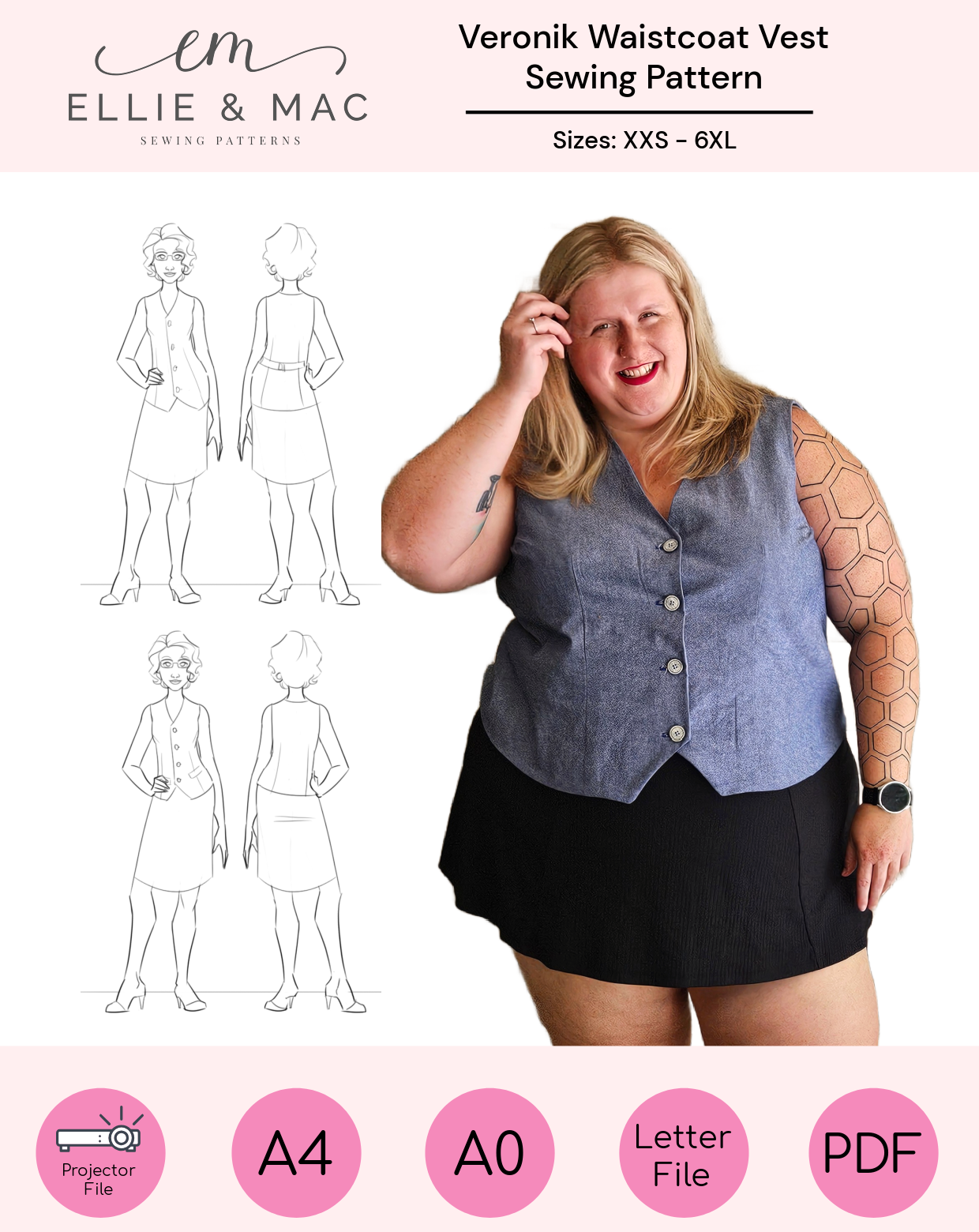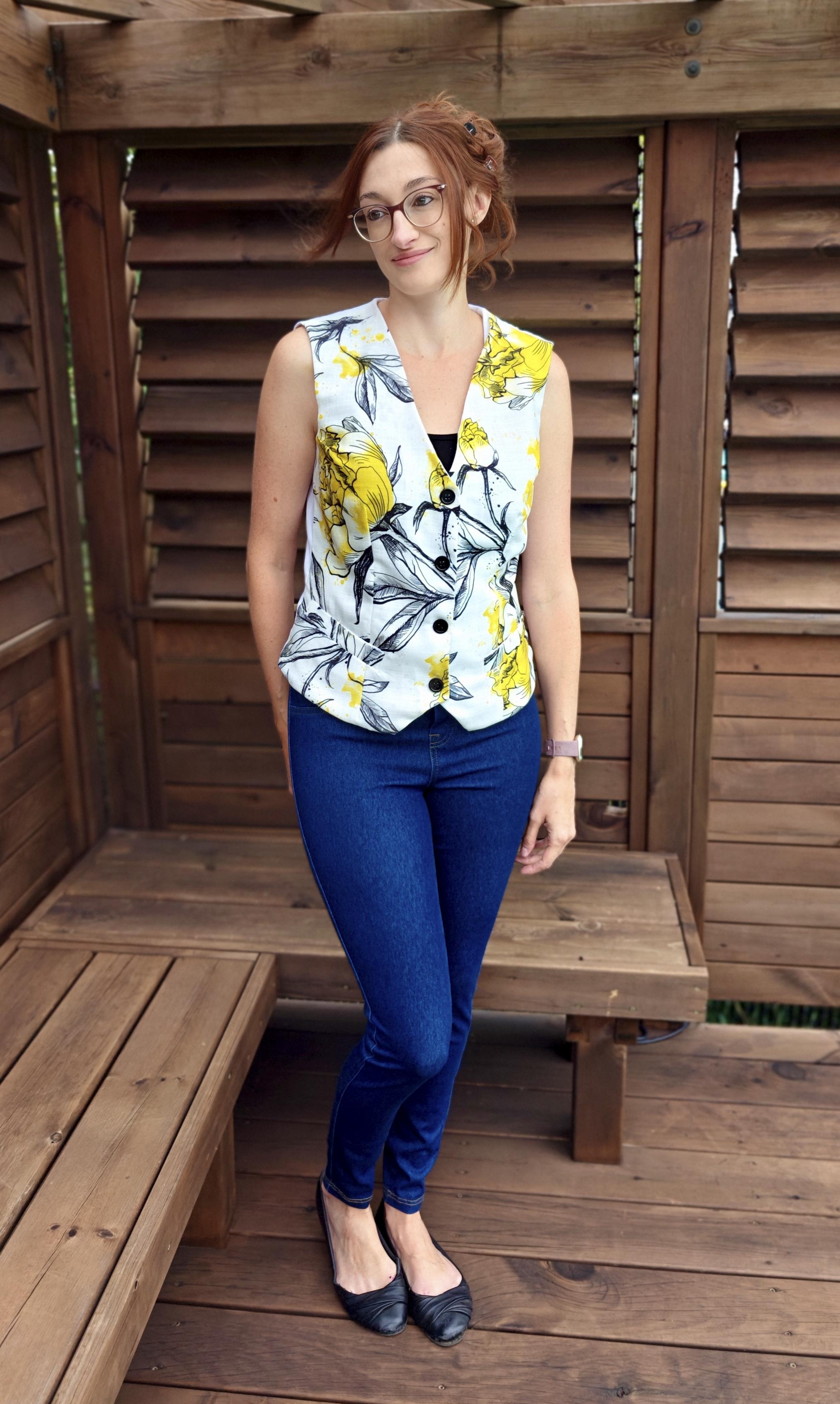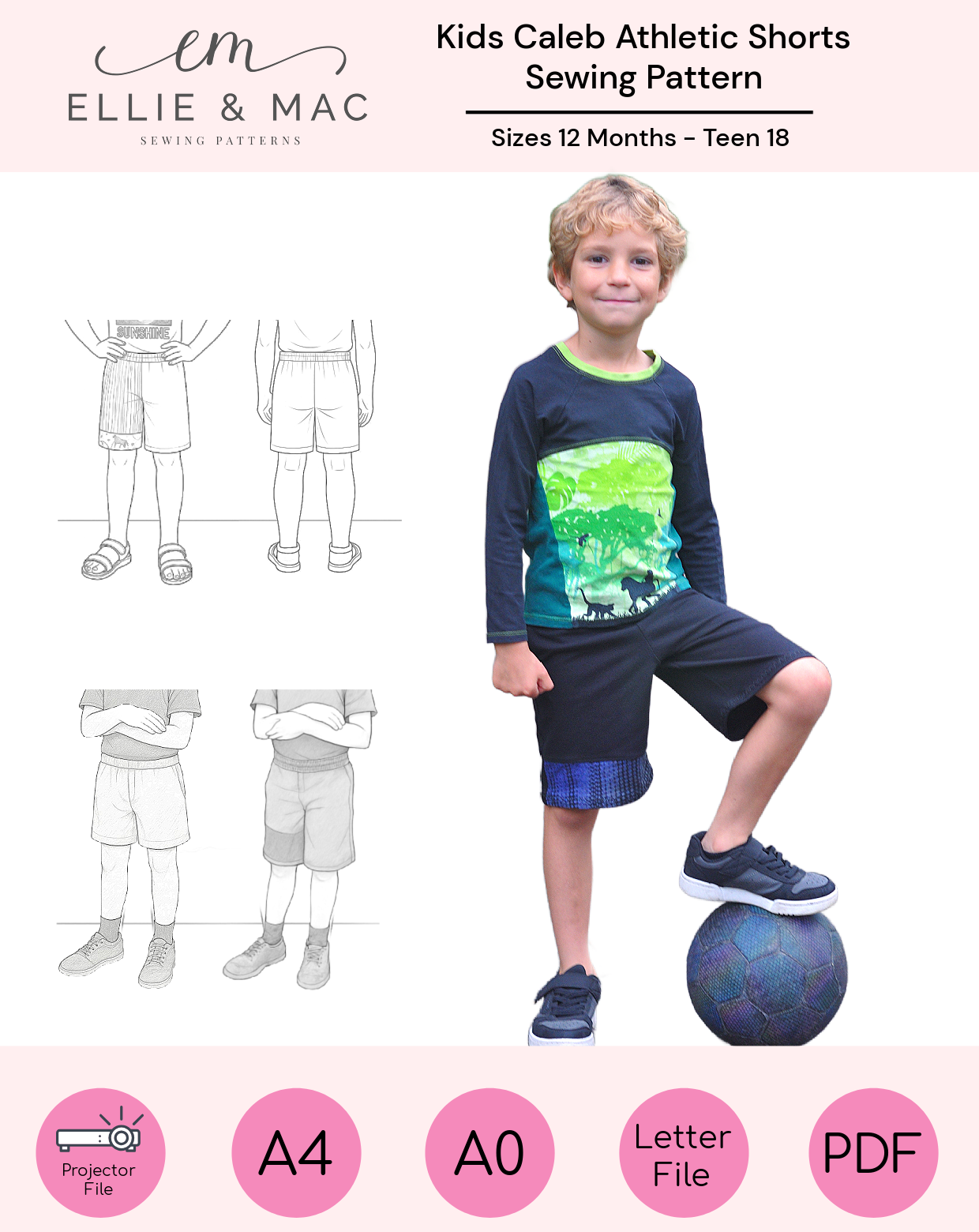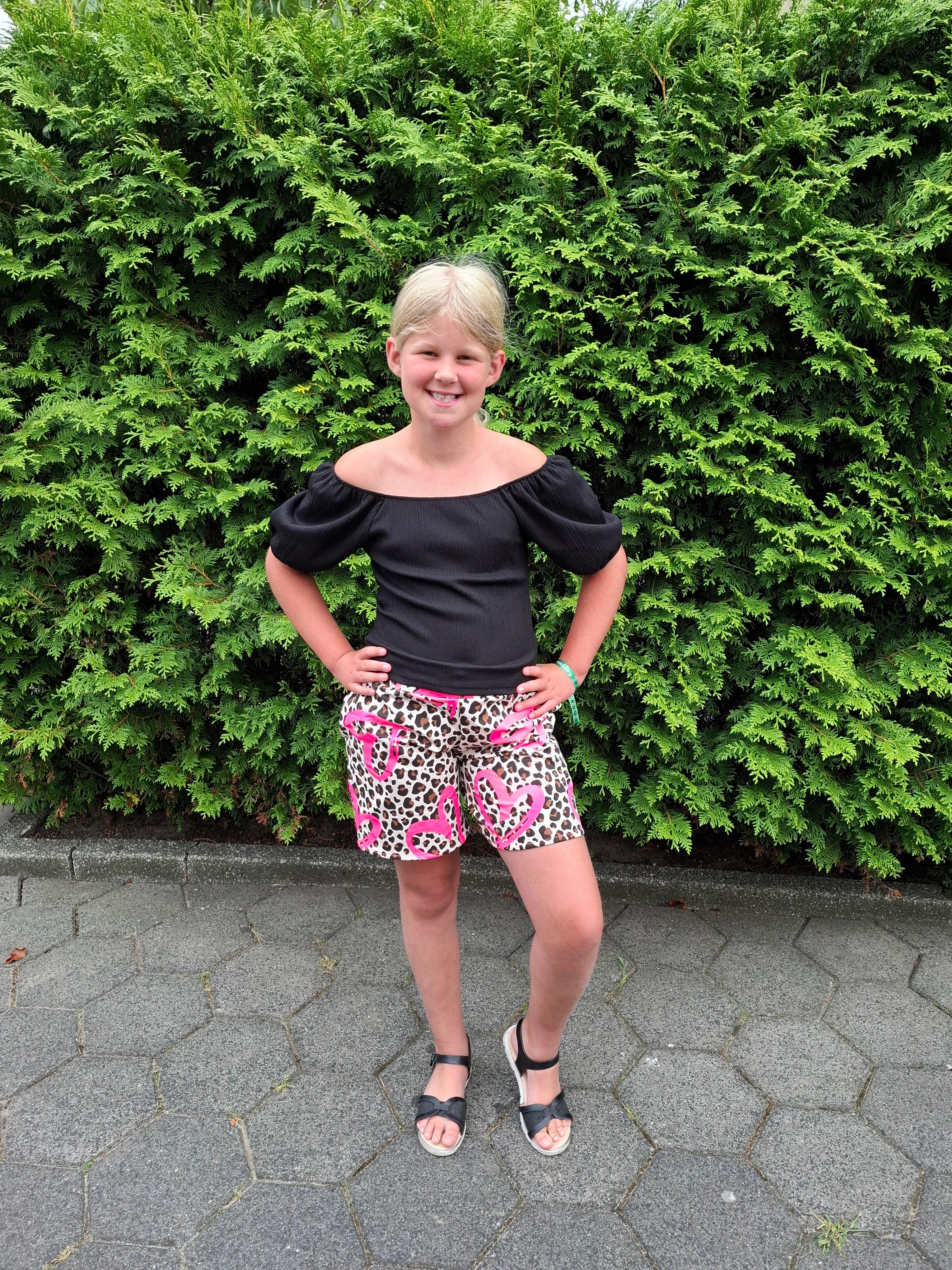
Every person is built differently and it is likely that we will all need to do our own personal adjustments to get the best fit. How do you know if you need to adjust something? By measuring and comparing yourself or your model with the pattern.
Let me walk you through the things that you need to measure and maybe adjust.
Materials needed:
- Measuring Tape
- A piece of rope to mark your waist
- A notebook
This tutorial contains the following subjects:
1. Take your Waist and Hip Measurement
2. Measure your Rise
3. Measure your Inseam
4. Comparing the Measurements to the Pattern
5. Grading the Pattern for a different Waist Size
6. Adjusting the Rise
1. Take your Waist and Hip Measurement
We have a Blog Tutorial and a YouTube Tutorial that includes the “how to” part. It is recommended to wear the underwear that you want to wear with the garment while taking your measurements.
2. Measure your Rise
We want the top of the waistband to hit your true waist, so make sure you have the piece of rope tied around your true waist (the point that curves first when you bend to the side).
A. Measure your Full Rise: Place the tape measure between your legs, beginning at the waist elastic at the front center, and ending at the waist elastic in the back center (shown below). This is your full rise measurement.
B. Measure your Front Rise: Measure from where the intersection point of the seams at the crotch is up to the center front rope. (tip: You can add a string of thread through a spool of thread, tie it into a loop and feed your measuring tape through the loop. When you measure the weight of the spool makes the thread glide towards the lowest point of your rise. When you carefully lower the measurement tape, you will be able to read the number. Some people measure a legging that sits well from the true waist to the intersection seam at the crotch as well. This is a little less accurate, but can be done as well).
- calculate your Back Rise: Full rise - Front rise = Back rise
3. Measure your Inseam
To measure your inseam, stand with bare feet with about 8” (20 cm) of room between your feet. You place the measuring tape at the point where the intersection point of the seams at the crotch is (the lowest point of the crotch). Hold, pin or tape the measuring tape in this spot and make sure you stand up straight while you take this measurement. It might be helpful to have someone assist you at this point.
Upper Leg Inseam: You measure from the top of your leg (where you just pinned/taped the measuring tape to your knee.
Lower Leg Inseam: You measure from the knee to the place where you want the legging to hit. This pattern aims to end just below your ankle bone.
4. Comparing the Measurements to the Pattern
Now you have your measurements noted you can compare them to the pattern.
A. Measure the front and the back rise of the pattern:
You will need to measure multiple pattern pieces to measure the rise. This is the way to calculate:
Front Rise Pattern (Top Front Piece + Height Fabric Waistband minus ¾” seam allowance OR Top Front Piece + half of the height of the Ribbing Waistband minus 1/2” seam allowance): _______
Front Rise Model: ______
Back Rise Pattern (Top Back Piece + Yoke + Height Fabric Waistband minus 1 1/4” seam allowance OR Top Front Piece + Yoke + half of the height of the Ribbing Waistband minus 1” seam allowance: _______
Back Rise Model: ______
You will need to add the difference in measurements between the model and the patterns front/back rise in a 1:0.5 ratio. Therefore we multiply the outcome by 0.5.
Front Rise Adjustment (Model - Pattern Rise) x 0.5 = _____ *
Back Rise Adjustment (Model - Pattern Rise) x 0.5 = _____ *
* (For example 20 - 18 x 0.5 = 1, this means you will need to add 1” to the rise. 20 - 22 x 0.5 = -1, this means you will need to subtract 1” to the rise)
Forward to paragraph 6 for examples on how to adjust the back and front rise with pictures.
B. Measure the Upper and Lower Leg Inseam of the pattern:
Upper Leg Inseam Pattern (Top Front Piece from crotch down + Height Leg Colorblock Section Piece + “Height Bottom Piece to knee line” minus 1” seam allowance): _______
Upper Leg Inseam Model: ______
Lower Leg Inseam Pattern (“Height Bottom Piece from knee line down” minus ½” hem allowance): _______
Lower Leg Inseam: ______
You will need to add the difference in measurements between the model and the patterns upper/lower leg inseam in a 1:0.5 ratio. Therefore we multiply the outcome by 0.5.
Upper Leg Inseam Adjustment (Model - Pattern Upper Leg Inseam) x 0.5 = _____ *
Lower Leg Inseam Adjustment (Model - Pattern Lower Leg Inseam) x 0.5 = _____ *
* (For example 20 - 18 x 0.5 = 1, this means you will need to add 1” to the inseam. 20 - 22 x 0.5 = -1, this means you will need to subtract 1” to the inseam)
You can add/remove the difference between the two Upper and Lower Leg Measurements at the adjustment lines.
When you shorten the Upper Leg Inseam, please double check the knee circumference since it can be you will need to take in this area a little bit due to the adjustment.
5. Grading the Pattern for a different Waist Size
When your waist size is a different size then your hip size, you need to grade the pattern to fit your model's body. There are two ways to grade this pattern: by grading from dot to dot (which gives a bit less professional results, but works fine overall) and by slashing the pattern (which spreads the width difference more evenly and looks/fits a bit better).
When you use your projector the dot by dot way can work while projecting, when you slash the pattern you will need to draw the upper part of these legging pattern pieces: back, front and outer pocket. If the difference in size is more than two sizes we highly recommend using the slash method.
A. Grading from Dot to Dot
Select your waist and your hip size layer in the pattern and place a dot at the top at the waist size and a dot at the hip line. Draw a fluent line to connect the dots. (this is a different pattern, but this works the same way for every pattern).
B. Grading by Slashing the Pattern
- Select your waist and your hip size layer in the pattern.
- Measure the difference between the two sizes at hip height for each different piece (for front and pocket add the difference between both sides, so you will have one number):
- Cut along the vertical lines that are placed on each pattern piece (slash), and make sure the pattern stays connected at the bottom.
- Spread the pattern piece with the amount of difference between the sizes that you have measured per pattern piece. Stick a piece of paper behind the pattern to close the gap and connect the top line again.
6. Adjusting the Rise
You need to have 4 pattern pieces on paper to adjust the rise: Top Front, Top Back, Pocket and Yoke. You can print them or project them on a piece of paper and overline the projection at the paper. After the adjustment we use the original pieces to draw back the lines, so you can print them a second time or project them at the adjusted pieces.
Then you paste the pattern pieces together to form one piece. Make sure to overlap the seam allowances. Then you draw a vertical line down the center of the Front Piece (red line). This line shows which part of the pocket is visible from the front and which part from the back.
A. Shorten the Back Rise
|
|
Cut at the green line, but leave the pattern piece connected at the green arrow. |
|
|
|
|
|
Redraw the pocket line and the top line, cut out the new pattern piece and turn them into separate pattern pieces again. with sewing. |
B. Lengthen the Back Rise
|
|
Cut at the green line, but leave the pattern piece connected at the green arrow. |
|
|
|
|
|
Redraw the pocket line and the top line, cut out the new pattern piece and turn them into separate pattern pieces again. with sewing. |
C. Shorten the Front Rise
|
|
Cut at the green line, but leave the pattern piece connected at the green arrow. |
|
|
|
|
|
Redraw the pocket line and the top line, cut out the new pattern piece and turn them into separate pattern pieces again. with sewing. |
D. Lengthen the Front Rise
|
|
Cut at the green line, but leave the pattern piece connected at the green arrows. |
|
|
You move the right top up as much as you need to add to the front rise, keeping the lines parallel. |
|
|
Redraw the pocket lines and the top line, cut out the new pattern piece and turn them into separate pattern pieces again. with sewing. |
D. Lengthen the Front and Back Rise
|
|
Cut at the green line, but leave the pattern piece connected at the green arrows. |
|
|
You move the right top up as much as you need to add to the front rise, keeping the lines parallel. |
|
|
Cut the Top Back Part all the way through. |
|
|
Redraw the pocket lines and the top line, cut out the new pattern piece and turn them into separate pattern pieces again. with sewing. |
Enjoy your new pair of perfect fitting leggings!
(Written by: Manda Hoogstra-Rademaker)




